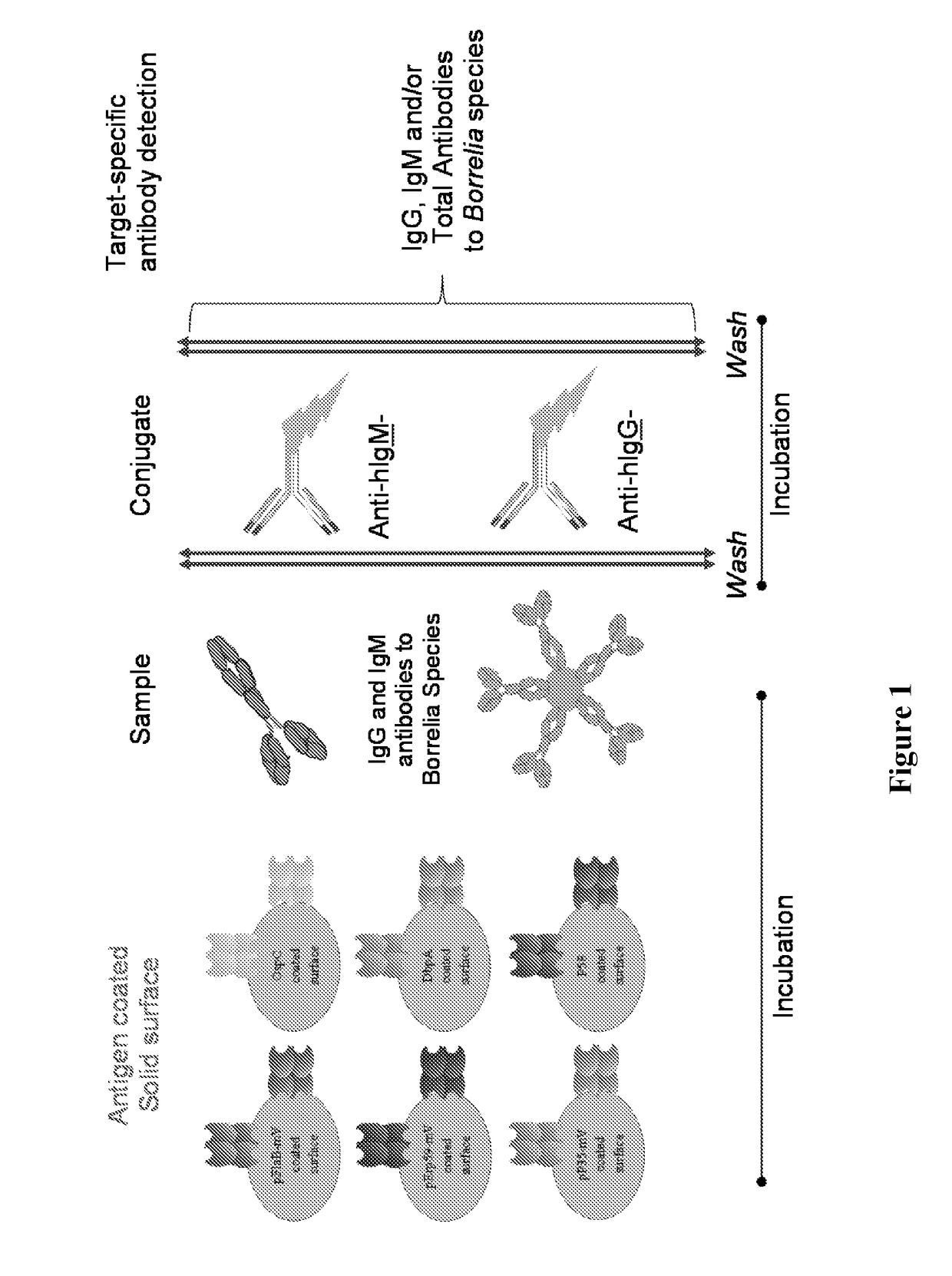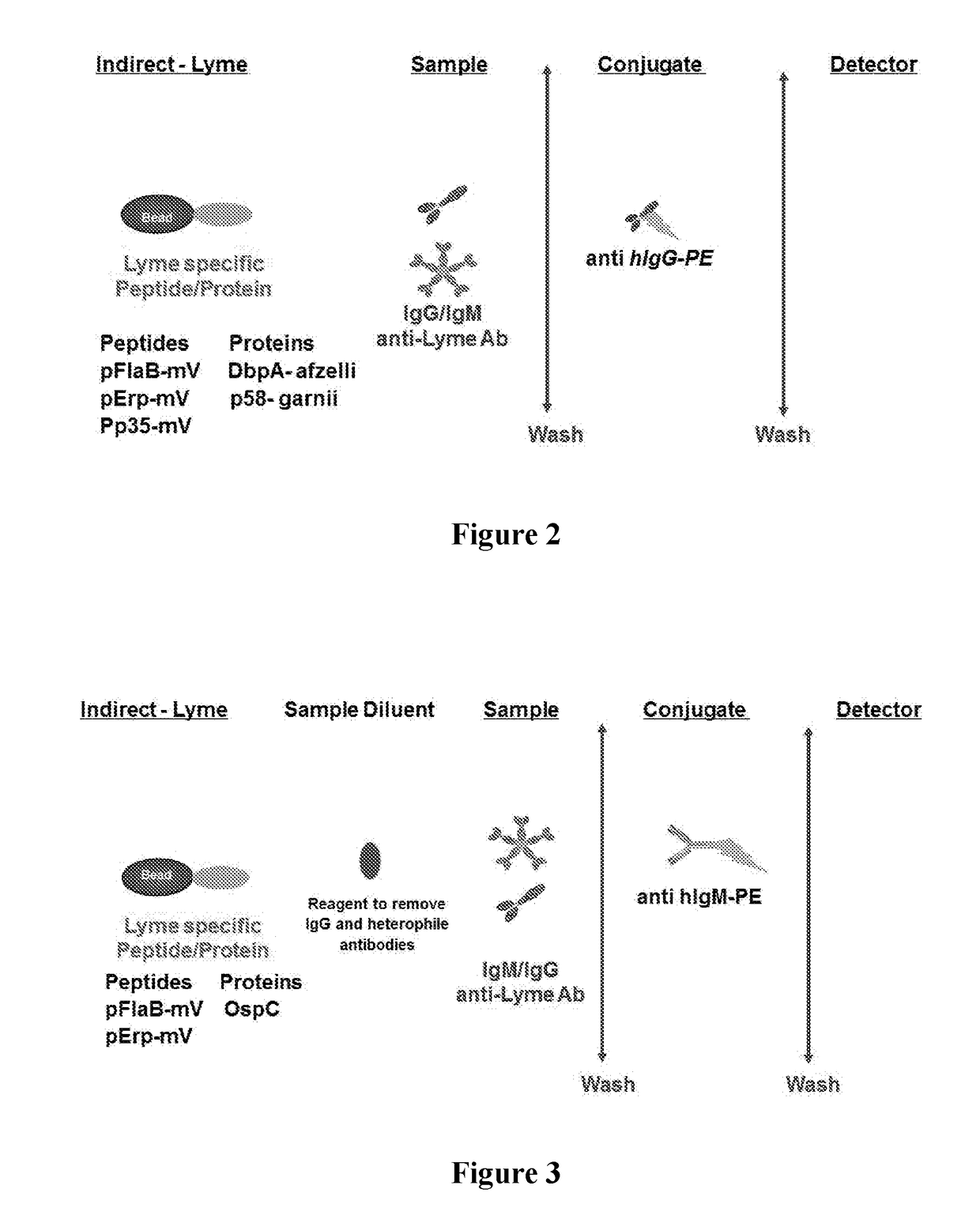Borrelia immunoassays and materials therefor
a technology of immunoassays and antibodies, applied in the field of antibodies to borrelia and antibodies and materials therefor, can solve problems such as confusion and misunderstanding of the value of testing
- Summary
- Abstract
- Description
- Claims
- Application Information
AI Technical Summary
Benefits of technology
Problems solved by technology
Method used
Image
Examples
example 1
Immobilization of Peptide and Recombinant Protein Antigens
[0068]The protein and peptide antigens (e.g., pFlaB-mV, pErp59-mV, pP35-mV, OspC-types I and B, DbpA, P58 or combinations thereof) were immobilized on a solid support (e.g., microparticles, beads, or surface such as a chip, microliter plate, membrane, or glass). In some immobilization protocols, carboxylated beads were activated and esterified before adding Borrelia specific peptide and protein antigen(s). Carboxyl activation was achieved using a water soluble carbodiimide, such as 1-cyclohexyl-3-(2-morpholinoethyl) carbodiimide (CMC). Esterification was achieved using NHS, NHSS or HOBt. After the carboxyl activation and esterification, the Borrelia protein and peptide antigen(s) were added to the actived surface in buffers with pH between 6-10. For example sodium acetate buffer pH 5.1, phosphate buffer pH 7.0 with or without detergent (e.g., CHAPS, ionic and zwitterionic detergents). After coupling / immobilization, the solid ...
example 3
n of the Disclosed Multiplex Assay Against EIA and 2-Tier Testing Algorithms
[0071]This example illustrates the performance of the disclosed multiplex Borrelia total assay against EIA and 2-tier testing algorithm on one set of clinically characterized serum samples from CDC with known disease stages (Panel A; N=32). Patient samples were tested for the presence of Lyme total (IgG and IgM) antibodies using the BioPlex 2200 platform. Readings were obtained by a flow cytometer that detects each bead region according to its fluorescent dye signature, as well as the presence of antibodies bound to each bead. Essentially, each sample is incubated with the bead reagent to allow disease specific antibodies to bind antigen coated beads. The unbound sample components are aspirated, and coupled beads are washed. In the second step, washed beads are incubated with the conjugate reagent containing anti-human IgG-PE and IgM-PE. After a short incubation period, excess conjugate reagent is removed an...
PUM
| Property | Measurement | Unit |
|---|---|---|
| pH | aaaaa | aaaaa |
| pH | aaaaa | aaaaa |
| diameter | aaaaa | aaaaa |
Abstract
Description
Claims
Application Information
 Login to View More
Login to View More - R&D
- Intellectual Property
- Life Sciences
- Materials
- Tech Scout
- Unparalleled Data Quality
- Higher Quality Content
- 60% Fewer Hallucinations
Browse by: Latest US Patents, China's latest patents, Technical Efficacy Thesaurus, Application Domain, Technology Topic, Popular Technical Reports.
© 2025 PatSnap. All rights reserved.Legal|Privacy policy|Modern Slavery Act Transparency Statement|Sitemap|About US| Contact US: help@patsnap.com


